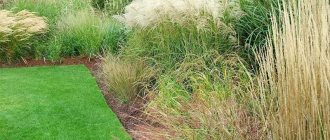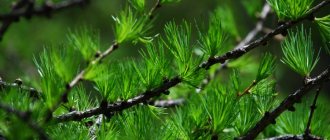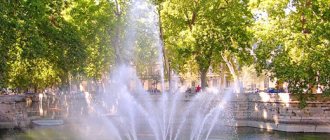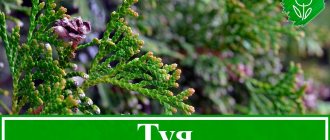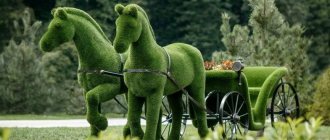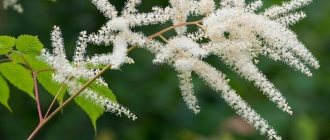Modern landscape designers often use coniferous trees in their projects. They fit harmoniously into almost any design. They look great with flowering arrangements, with various shrubs and lawns.
They are especially good in the winter season, as they enliven the area. And for children it will be a joy to decorate them before the New Year, because who doesn’t like to lead a merry round dance with a dressed up prickly beauty on holidays.
Among other things, there are a number of advantages for which gardeners prefer them:
- Unpretentious - exist normally with a lack of lighting and moisture
- Frost-resistant
- Characterized by rapid growth
- Certain classes are used in medicine, both traditional and non-traditional
- Most varieties have the correct shape from the start and there is no need to trim them
Plus, the huge variety guarantees success in garden decoration. In the article we will definitely provide photos and names of coniferous trees.
Pine
There are more than enough varieties. Many varieties have been bred for landscaping - they are miniature and characterized by slow growth.
Of course, it is not possible to talk about them all in one article, but we will list the main types.
Pine does not really like the city, because it does not take root in it as well as in the wild. But because of its decorative, lush crown, it is a great success among designers - squares and parks are artificially planted with it.
Redwoods
The tallest and oldest tree on the planet, the sequoia, grows wild only in California (USA). The branches of the conical crown are located strictly horizontally, only occasionally bending slightly downwards, the average life expectancy is about one and a half thousand years.
The tree is not grown in open ground at our latitudes; it needs a lot of moisture in the ground and air. Indoor bonsai-style options are more popular. They require a lot of patience and care, but the exquisite beauty of the composition makes up for all the difficulties.
Weymouth Pine
It originated in North America, and was named after Lord Weymouth, who brought it from there to England.
It is rightfully considered a long-liver (400 years). When the shoots are young, they are characterized by an orange edge. How they bloom - flowers do not appear, but cones immediately form
Recommendations for growing:
- Regular watering (every 2-3 weeks).
- Mulching the ground (autumn).
- Fertilizing (mineral fertilizers)
- Pruning (cosmetic length correction is required for low-growing varieties).
Araucariaceae
An ancient family of conifers, according to modern scientists their age exceeds hundreds of millions of years. The main part of the genera grows in the Southern Hemisphere, and only one - in the Northern Hemisphere. Lives in tropical and subtropical forests.
Agathis
The trees, whose height often reaches 70 m, easily tolerate drought and grow well in the shade. The soil is suitable loamy, loose, drained. Planted in spacious areas protected from the wind. The lower temperature limit is -20 °C.
Agathis is interesting for its variety of leaf shapes - from narrow, pointed leaves typical of conifers to lanceolate.
Araucaria
Unlike agathis, araucarias do not tolerate frost and are intended mainly for home growing. “Tub” specimens rarely grow more than 2 m in height.
In the garden, pots with araucaria are used to decorate flower beds or areas, verandas with good diffused lighting.
Read more about araucaria and its care here.
Spruce
The number of subspecies is enormous, you can find it in the photo catalog of plants. In Russia, spruce is one of the most beloved coniferous trees.
It tolerates shadow quite well, but loves light more.
When constructing sanatoriums and other health institutions, it is necessary to plant fir trees there - to create a cozy atmosphere and further purify the air with the substances they emit.
In addition to being used in the landscape, wood is used to make musical instruments, paper, artificial silk and much more.
From dwarfs to giants
A coniferous plant in the garden is not necessarily a huge pine or spruce tree, towering several meters, although some people like such specimens. Graceful evergreens also come in miniature forms. For example, some varieties of junipers do not grow up to 40 cm in height. There are also real dwarfs in the world of conifers, rising several centimeters above the ground.
The sizes of representatives of the coniferous department vary from centimeters to tens of meters, so to create a multi-tiered composition you can only take such trees and shrubs.
Siberian spruce
In Russia it grows in Siberia, the Urals and the Far East. This species requires high humidity and nutritious soil for normal life.
You also need to be careful in caring for it, as it is often attacked by various insects.
Indoor cypress
Another coniferous plant that can comfortably tolerate living in an apartment if you choose a bright and cool place for it. Cypress is sensitive to dry air, so for the health of the plant, the crown must be regularly moistened with a spray bottle. A distinctive feature of this representative of conifers is its increased sensitivity to light. The tree needs bright, but at the same time diffused light; be careful not to place it in direct sunlight.
It is recommended to decorate cypress with small, lightweight toys; serpentine and narrow tinsel are also perfect. But immediately after the holidays, it is better to completely free the crown, otherwise the young plant may get sick.
Cypress has antibacterial and antiviral properties and is a symbol of endurance, grace, youth and eternal life. It is also considered the tree of marriage and love and helps to find and maintain family happiness.
Canadian spruce
Originated in North America. Not as widespread on Russian territory as Prickly, however, it has found its recognition among our gardeners. It is classified as frost-resistant and drought-resistant specimens. On average, life lasts from 300 to 500 years.
Care tips: should be planted in shaded areas or artificially create protection from direct sunlight, due to excessive sensitivity to bright light, it can cause burns.
Yew
Representatives of the species live mainly in the Northern Hemisphere. Like all conifers, they retain their modified green foliage all year round. The plants are interesting because of their lifespan - over two thousand years - and their fruits - the only conifers that form berries rather than cones.
Yew renews itself extremely poorly - seeds that fall from the mother tree almost never germinate. The reason is that pine litter, when decomposed, synthesizes substances that kill seedlings.
Yew
Only a few species are grown for decorative purposes: short-leaved, berry, pointed, and Canadian. Although the initial height of yew trees exceeds the 10-meter mark, breeders have developed miniature varieties. Hybrids with a height of 30-100 cm are popular.
Yew tolerates frost well and is indifferent to lighting. Experienced gardeners plant it among other shrubs and low-growing trees to reduce the risk of freezing. Yew does not like stagnant water, acidified soil, wind, drought, dusty, polluted air. It also does not emit essential oils characteristic of all conifers, and therefore has only decorative value. In most yews, all above-ground parts and roots are poisonous!
Torreya
The plant is rarely grown in our country - it is heat-loving, and the climatic conditions of the Black Sea coast of the Caucasus are most suitable for it. The most common types are nutmeg and nut torrey.
It is bred exclusively for practical purposes - the nuts are edible and are also used in the production of paints and varnishes.
Torreya is demanding to care for, but new varieties with variegated needles are gradually winning the hearts of summer residents. It grows well on any soil, except highly acidified. There are no requirements for soil fertility. Loves good lighting and reliable protection from the wind. It tolerates moderate frosts well; it only requires mulching the tree trunk circle with a thick layer of organic matter.
Thuja
This needle-shaped plant is basic in a landscaping project; it can be safely used both for the city (since it tolerates polluted air well) and for the country house.
There are quite a few varieties, we list what they are:
- Eastern
- Western
- Folded
- Korean
Thujas are used in landscape design as hedges or other decorative compositions. They can be short and huge (for example, Folded). The fruits are small oval-shaped cones.
Cypress
The family includes 19 genera (more than 130 species), distributed mainly in warm regions.
Unlike the relatives described above, some species are dioecious. Cypress trees are one of the few conifers that can be successfully propagated by cuttings.
Cypress
The most “neat” tree – its crown is dense and symmetrical. Even fully ripe fruit cones do not become shaggy; they decorate the branches with medium-sized light brown balls. Cypress usually emphasizes the high status of the dacha owner.
The capricious southerner, of the evergreen, pyramidal or Arizona species, overwinters well in the conditions of the Middle Zone if the temperature drop does not exceed -20 °C. Low-growing and dwarf varieties are considered the most suitable - they are easier to cover for the winter.
The best place for planting is semi-shaded, with fertile, loose soil that does not retain moisture. All cypress trees are demanding when it comes to watering, air humidity, and adding nutrients to the soil.
Juniper
The shrub amazes with its variety of shapes and types. In nature it grows almost everywhere, with the exception of eternal snow and ice. Luxurious spreading, tree-like ones - in fertile warm regions, modest bushes - on mountain slopes and in cold regions.
All junipers love the sun, loose, well-drained soil with an excess of dolomite, and are able to grow on sparse rocky slopes. They differ in the shape of the crown - tree-like, bush-like, creeping, the color of the needles, the color of small fruits. They do not require special attention from the gardener, but are extremely demanding on planting conditions.
Juniper varieties
Thuja
One of the oldest plants is invariably popular among summer residents. Highly decorative, easily formed crown, healthy air in the country, the possibility of propagation by cuttings are the main advantages of the tree. Most thujas tolerate frost well, needing only light shelter or regular brushing of snow from the branches.
For decoration, a variety of types are used - with a columnar or spherical crown, similar to spruce trees and creeping along the ground.
Also read the article about planting thuja and growing this plant at home.
All types and varieties can easily tolerate shade, drought, and prolonged rains, provided there is good drainage.
Cypress
The trees are not large in size - country varieties rarely grow more than one and a half meters. Their compact shape allows them to be planted in small, well-lit spaces.
The pea cypress best tolerates the difficult climate of Russia; it also leads in unpretentiousness. The most difficult variety to grow is the Lawson variety, which cannot tolerate cold weather. Heat-loving varieties tolerate being moved from place to place well; they are grown in tubs and stored in a moderately warm room for the winter.
Kallitris
The subfamily belongs to the cypress family. Of the 36 species, 30 are subtropical, not adaptable even in the subtropical zone of the Russian Federation. They are grown only in botanical gardens for scientific purposes.
As a decorative element of the landscape, callitris is of no value - its appearance almost completely replicates cypress trees, but care is disproportionately more difficult.
Juniper
It grows in both tree and shrub form. It is unpretentious to light and temperature conditions, therefore it grows both in the north and on the southern slopes of the mountains of Crimea and the Caucasus.
Life expectancy is on average 500 years. Varieties of cones are spherical, bluish or gray in color.
Juniper has many subspecies, and some of them top the list of needle-like fellows that are useful for their bactericidal properties.
When preparing to plant, pay attention to the soil and the place where you will plant. The greatest probability of taking root is on sandy, loamy soils, but there is a possibility of growing on rocky soil.
It is better to choose a sunny and well-ventilated area for the location of the plant.
Propagated by seeds, they are collected starting from the second year of growth, at the stage when the berries begin to darken
Where do they grow?
Map of the distribution of pine trees
Evergreen species can be found on all continents of the planet:
- from the Equator, right up to the boundaries of permafrost;
- on the Eurasian continent;
- in Central and South America;
- some species are endemic to Africa and the tropics.
Coniferous forests grow best where winters are long and the climate is cold, with average to high annual rainfall. Moist soil is necessary for their life. Some representatives are found even beyond the Arctic Circle. In warm latitudes, these trees predominate in mountainous areas where there is no intense heat.
For the most part, pinopsids grow along the Pacific Ocean. Scientists believe that after the Mesozoic era, when these plants reached their highest development, the climate in these areas changed very little.
Interesting fact : scientists consider extinct fern-like ancestors of gymnosperms, and their first representatives date back to the late Devonian period.
Larch
Description of the tree, let's start with the fact that its needles fall off every year. The needles are soft and pleasant to the touch. Very beautiful in spring and autumn.
Larch has unusual cones that from a distance look like small roses; their color adds even more resemblance to a flower - while young they are burgundy in color.
Like all evergreens, larch is a long-liver, some species survive for 800 years. They are valued in folk medicine.
With needles collected at the beginning of summer, a drink is made to quench thirst and to prevent various diseases. They are used in dietary nutrition, and essential oils are the basis for inhalation for diseases of the ENT organs.
Examples of use in landscape design
In the design, it is advisable to combine conifers that differ in size, type and color. Yellow juniper, blue spruce, and green cypress coexist perfectly in one composition.
Bright representatives of the “needle-shaped” can coexist with any other plants, representing the decoration of a flower bed or rock garden.
Important! Conifers look great surrounded by stones.
And lastly, tall spruces, pines, and larches can act as a beautiful backdrop for flowers or garden figurines. For these purposes, take fast-growing varieties.
Choose conifers for your dacha from the 15 listed, combine them with each other or use them as a free-standing decoration on your site.
Cedar
One of the most aristocratic trees. If you plant cedar trees at the entrance to the house, a solemn atmosphere is immediately created, they give a finished look to the entire design, add strength and elation to the appearance of the estate.
An undoubted advantage is that there is no need for constant care, no need to trim, shape the crown, or remove fallen leaves in the autumn season. And the unique aroma of nearby plantings heals the air.
It is not for nothing that they are included in the list of unique trees of the Kirov region. All cedar trees have a very interesting structure.
Just like other representatives, cedars are long-livers, their average life span is 800-1000 years. They are very common in Siberia, but also grow in the southern part of Russia, in Sochi and the Krasnodar Territory.
The article presents only a few coniferous trees, photos and names, of course there are many more of them, but within the framework of one material, it is simply impossible to describe everything.
Therefore, if you are puzzled by the design of a garden plot or a design project, then feel free to take note of plants from the coniferous class, because their use will decorate any area.
Pine
These trees with slender trunks, less often shrubs, reach a height of 30 m, some wild species - 80 m. The average age is 150-200 years, although long-lived specimens are known that have celebrated their 5000th anniversary. They are not capricious, winter-hardy, tolerate drought well, and require minimal care. The main condition for successful cultivation is excellent drainage to remove excess moisture.
Pine
Loves well-lit places and space. They do not make high demands on the chemical composition of the soil; they prefer loams and sandy loams; they often thrive in rocky areas that are poor in nutrients. Of the many species, mountain pine is the most popular among summer residents. She is unpretentious and does not require intense care.
Among the many varieties, you can choose a cultivar that is ideally suited to the existing conditions, with a height from 60 cm to 10-15 m. The seedlings delight with variety: with the usual crown shape, columnar, ellipsoidal, bushy. Pines also differ in the color of their needles - from dark green, monochrome at any time of the year, to variegated, when young needles are noticeably lighter in color than last year’s needles.
Spruce
The genus includes about 40 species. Slender trees in their youth feed on the taproot. Over time, it dies off; its function is performed by lateral branches located close to the surface of the earth. This feature of the root system makes spruce trees vulnerable to winds. The height of the trees reaches 40 m, life expectancy is up to 300 years.
In Fulufjellet National Park (Sweden), the oldest spruce in the world grows - its age is more than 5.5 thousand years. Seedlings are planted away from buildings - the widely spreading roots can cause serious damage even to stone buildings. A place is chosen with good lighting; in the shade the crown forms asymmetrically, and varieties with variegated needles lose their high decorative value. The plant is not picky about the composition of the soil, but it develops better in acidified soil.
In addition to the common prickly spruce with reddish-brown bark, summer cottages are often decorated with blue spruce with bluish-green needles, usually choosing compact varieties, up to 2-3 m high, as well as variegated ones.
Ideas for using fir trees in landscape design
Cedar
Cedar, or Siberian pine, is rare in summer cottages: the tree requires special care at a young age, although in its natural environment, in the taiga, it grows without problems. The main feature of the species is its very short growing season, only 45 days. Although it is often called a giant tree, its slow growth, as well as the variety of new varieties, make it possible to use it in garden decoration.
The place for planting the seedling is chosen in such a way that an adult plant is provided with free space with a diameter of about 10 m. The area should be open, but young plants need shading until they are 10 years old, especially during periods of abnormal heat.
The soil is needed with a neutral pH, loose, well-drained. The plant loves regular moisture and fertilizing.
Lebanese, Himalayan, and Atlas cedars are considered real cedars. Unlike their Siberian relative, their seeds are not suitable for food. The famous pine nuts - the pride of Siberia - taste completely identical to the seeds of any pine tree, differing only in size.
If you have patience, garden varieties of Siberian cedar that have compact sizes can be grown in summer cottages in various regions. But only some varieties produce fruits of the required quality; the rest are used only for decorative purposes, including for creating bonsai-style compositions.
Fir
The graceful tree is prone to vagaries when growing, but its beauty and healing properties are worth all the effort. Of the more than 50 plant species, dwarf and low-growing varieties of balsam, Korean, Caucasian species, as well as creeping varieties of Fraser fir, are successfully used in garden design. These types are the achievements of breeders, causing a minimum of trouble for summer residents.
The species is well suited for shaded areas, but does not like wind. Therefore, they are planted in such a way as to fully satisfy these requirements, this is especially important for young trees. The best soil is loam that does not retain moisture. It’s just important to remember: all firs tolerate polluted city air very painfully; only they are suitable for dachas located in clean areas.
Larch
This species sheds its needles every year with the onset of cold weather; they are often used to decorate a summer cottage. Formed in the style of bonsai, it retains its decorative appearance even without needle leaves.
The long-lived larch (it lives for more than 500 years) has 20 species. All of them, except the Japanese one, categorically cannot tolerate shade. The soil needs to be fertile, with good drainage and a neutral pH reaction.
The height of the tree usually reaches 30-40 m, but the species lends itself well to pruning, and therefore ordinary full-sized trees are planted in the chosen location without fear. Modern varieties, bred from the European variety for decorating small spaces, have enhanced decorative properties.
Fir trees with weeping or cushion-shaped crowns look very attractive. Subminiature cultivars are grown in containers to effectively decorate areas where natural conditions do not allow keeping the plant in open ground.
Ketelery
The exotic conifer is found in the wild in the foothills of Southeast Asia. Keteleria is thermophilic, and therefore it is grown in the subtropical zones of the Russian Federation - on the Black Sea coast of the Krasnodar Territory and in the southern regions of Crimea.
The plant itself is not highly ornamental or valuable as a source of fruit. It is usually grown as something exotic, in order to emphasize its originality.
Hemlock
Hemlock is a real find for owners of small summer cottages. The trees are naturally compact in size; dwarf species can be classified as ground covers. The main difference of the species is its spreading, cascading branches, which add a special charm to any corner of the garden.
The plant is planted in semi-shaded areas on fertile sandy loam or sandstone.
The worst place is next to busy highways: the trees do not tolerate air pollution very well.
Read more in the article about hemlock.
Photos of coniferous trees
Advantages and basic tenets of a mixed flower bed
Evergreens are beautiful all year round and require little care. The flower beds in which they grow are called “beds for the lazy” - after all, the main effort has to be spent at the creation stage, when you need to think about the location, composition and layout, purchase seedlings, stones, mulch, and plant correctly. Further care is minimal.
Conifers are also very useful: they secrete phytoncides - volatile substances that can suppress the development of viruses, bacteria, and pathogenic fungi.
Spruce, thuja, and cypress trees planted along the boundaries of the site have a unique resinous aroma and reliably protect from wind, dust, and pollution.
Creating a flower garden with various types of coniferous trees and shrubs requires compliance with certain rules :
- A game of contrasts - neighboring plants should contrast in size, shape, color.
- Priority to compact, low-growing varieties.
- Mandatory consideration of the final size and characteristics of an adult plant.
- The principle of layering - tall forms are given a place in the back row, on the edge or center, in front of them are placed plants of the second tier and low-growing ground cover plants.
- Careful selection of the entire composition - you need to think through the combination and arrangement of different types of conifers, ornamental shrubs, flowering and herbaceous perennials, and annual crops.
- Attention to design - stones are considered, if not mandatory, then a desirable element; a flower bed with conifers looks good on a well-groomed lawn.
- Decorating/mulching the soil surface between plants.
The principles of tiering and contrast do not separate, but unite the participants of a mixed flower bed into a harmonious ensemble


